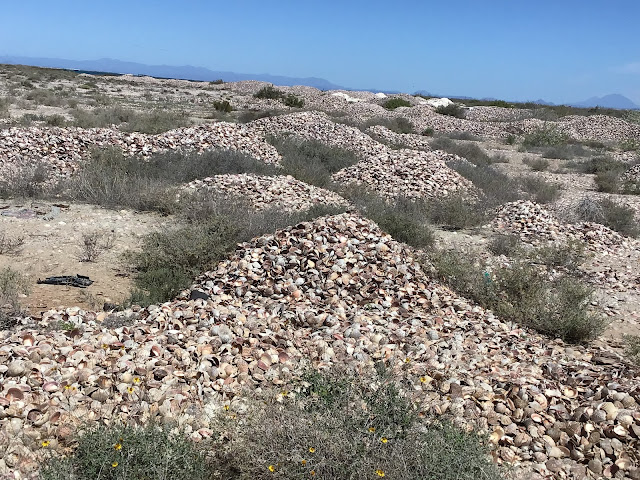Ojo de Liebre Lagoon
Wild life, whales and camping area, and salt lagoons. Sounded like the perfect place to visit

This is the description of the area from Wikipedia
The lagoon is within the Vizcaíno Biosphere Reserve UNESCO World Heritage Site, and is a Ramsar wetlands site. It also is the site of the biggest commercial saltworks plant in the world. It is an important habitat for the reproduction and wintering of the gray whale and harbor seal, as well as other marine mammals including the California sea lion, northern elephant seal and blue whale. Four species of endangered marine turtles reproduce there. It is an important refuge for waterfowl in the winter.
Encompassing both a UNESCO World Heritage Site and a major salt plant, Laguna Ojo de Liebre embodies the diverse worlds of natural habitat and industrialization.
The Ojo de Liebre lagoon has the biggest saltworks plant in the world – Exportada de Sal S.A. (ESSA). The company makes salt from seawater which is pumped into concentration ponds measuring 33,000 hectares.
The salt lagoons were interesting but we were not able to capture the story properly with pictures
 |
| They pump the ocean water into the lagoons, the salt is separated from the water, the water is drained off and the salt mined. Over simplified description |
 |
There were two of these fellows hanging around. When we went for a walk
they followed us about a couple of hundred feet behind us.
|
 |
They rented the campsite with these palapas for 200 pesos, $12.50 Canadian
or100 pesos (6.25 Canadian)with out. They are a grea t idea , many people
put their tents inside out of the wind or if you were in a small camper
you could sit or eat in them out of the wind. It is always windy here.
|
 |
| At the end of the beach you could rent these . Pretty cool design |
 |
| 8 feet wide and 16 feet long |
 |
| They have built 100's of nesting spots for the osprey |


































































